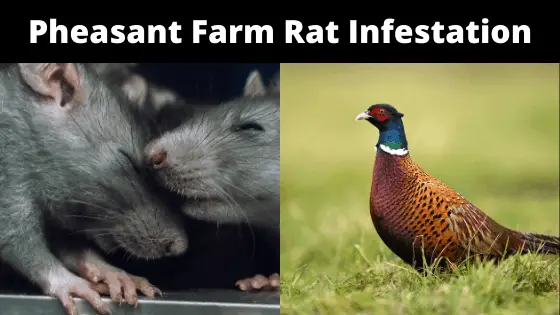Pheasant Farm Rat Infestation
Pheasant Farm Rat Infestation – Rats are a major problem on Pheasant farms. The Rats go after any food and spillage that takes place. They carry parasites and insects and generally will do a lot of damage, plus bring unsanitary conditions to your Birds.
Rats can also cause many diseases on pheasant farms that will weaken their immune systems and can kill them. Rats will damage everything in sight in no time.
What to do?
There are few rat control options available on the market that can help you get rid of the rat infestation.
You can use the rat capture method; you can prime them by spreading poison on the farm. You can also take some preventive measures like limiting their access to the farm, food, and shelter.
Damage from Rat Infestation on the Pheasant Farm
A rat infestation can cause economic losses in several ways:
Damage to Infrastructure
Rats can damage building structures, including waterlines, building foundations, and electrical cables. Damage to waterlines can cause water loss, and damaged electrical cables can cause short circuits and electrical failures.
Food loss – Spillage – Unsealed
Rats can eat anything that can be classified as food. They will eat good quality, fresh food, rotten materials, pheasant food, and manure.
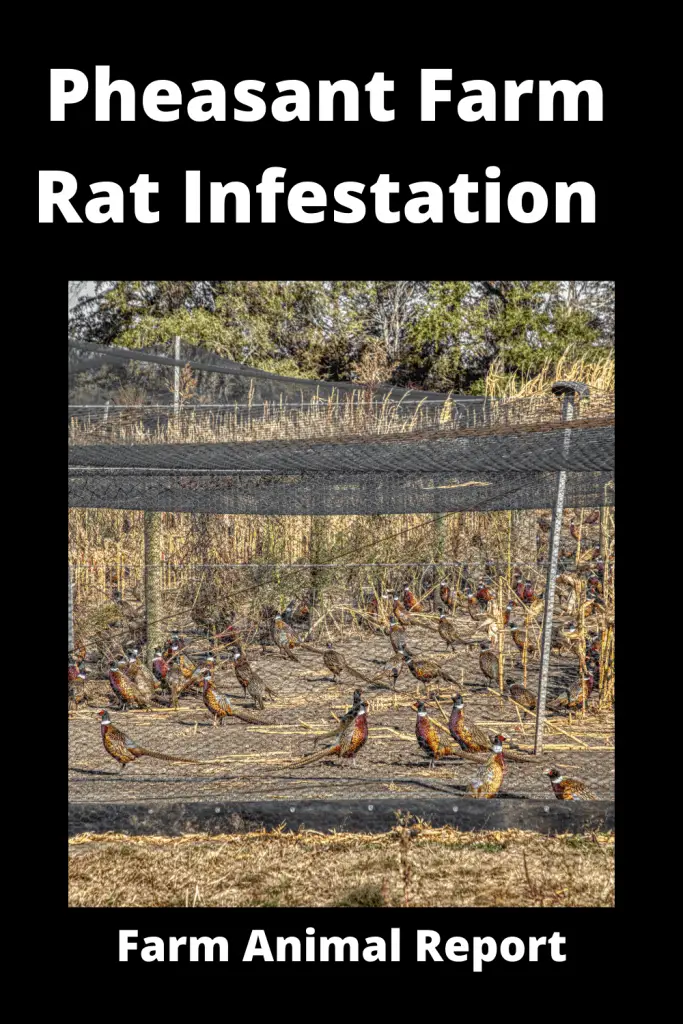
A rat can eat 30 g per day, but it is more spoiled than that through the spill and by contaminating it with urine and feces.
Damage to Pheasant Flocks
The rat can do a lot of damage to flocks by eating its eggs and killing its chicks. They are also carriers of zoonotic pathogens such as Salmonella Typhimurium and Pasteurella multocida.
Rodents also carry parasites such as lice, mites, and fleas. Also, rats can irritate the house with noise and movement.
Rat’s Ecology in Pheasant Farms
Rats are present on almost all pheasant farms. The pheasant farm building design provides easy access to rats. Once they enter, they will bury themselves under the dry matter, inside hollow walls and holes.
They use the opening of pipes, cracks, and cables to move around the farm. Rats are active at night; they usually eat late at night and early in the morning.
They need a dry place to dig and build their nest where they breed and rear their young. Rats leave greasy tracks when they run.
They leave a strong urine odor when defecating, leaving behind small characteristic blackish pellets approximately 10 mm long( 1/2″)
Rodent population
Rats reproduce very quickly, with one pair and their offspring capable of producing up to 800 offspring in 9 months.
There is a general rule for estimating rat populations is as follows, its kind of a rule of thumb, for every rat you see in the daylight, there are 500 you can’t see….Smile
How to control a Rat infestation
There are many preventive measures and an integrated program to control rodents.
Methods to kill rats
There are three commonly used methods to kill the rats in the pheasant farm.
Baiting
Poisonous chemicals (rodenticides) are used in the bait method. They are available in the form of delayed toxicity powders, fumigants, and tracking powders.
Baits are used in combination with traps for effective controls. These bait materials are also dangerous to poultry, livestock, and humans, so use them with caution by the manufacturer.
They also make Tamper Proof Bait Stations – they are much safer than other methods of using Bait to control Rats
We have found these methods found in Use on Pheasant Farms ( Mac Farlane Pheasants Inc )
- Bait Boxes – under Pens, and feed areas
- Rotate poisons so that Rats don’t become immune
- Bait Boxes down Rat Burros
Rodenticides
Rodenticides are available in different forms. Fumigants are used to control rats in uninhabited areas such as the food storage room and equipment storage rooms.
The fumigants available in solid form are
The fumigants available in liquid form are chloropicrin and in gaseous form methyl bromide.
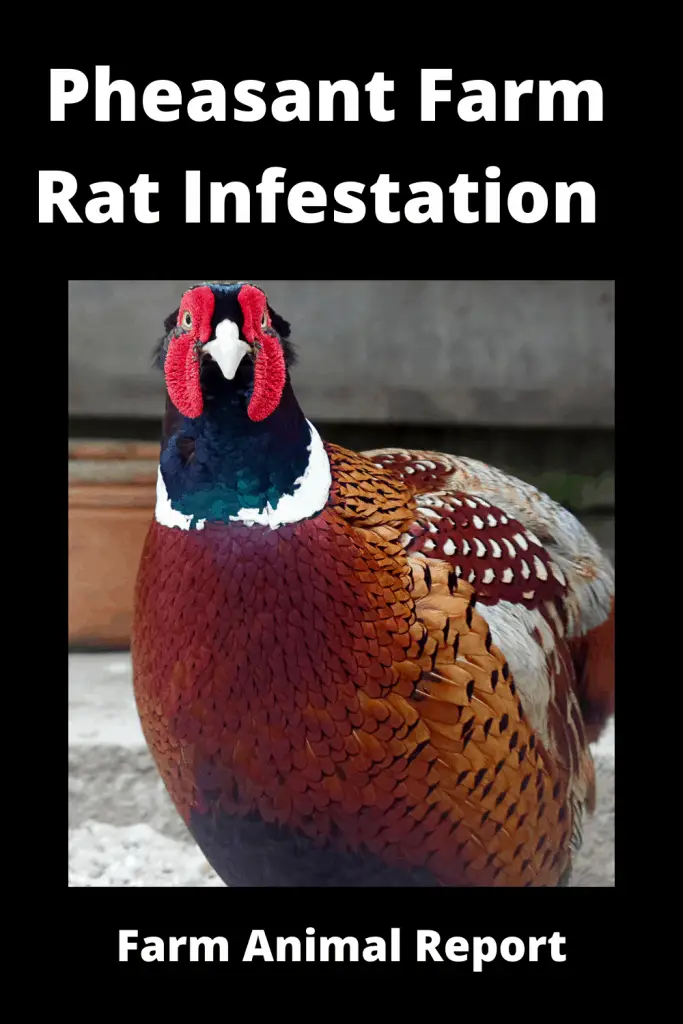
Another rodenticide is trace dust. It is a toxic powder that contains toxic substances with an acute or delayed action. They are used when rats do not eat grain bait and avoid traps.
Certain single-dose rodenticides are also available that will kill rats after a feeding. Zinc phosphide is a compound used as a single-dose toxicant that is used in areas with high rat populations.
Strychnine, red squill, alpha-naphthylthiourea, and sodium fluoroacetate are also used as single-dose rodenticides.
Warfarin is a delayed toxicity rodenticide and is known as a first-generation anticoagulant. It will kill the rat after an hour of eating. Other available delayed toxic rodenticides are difenacoum, brodifacoum, cholecalciferol, and bromethalin.
Always keep track of the rodent bait program, the bait station, the location of the bait, and when the bait is added to each station.
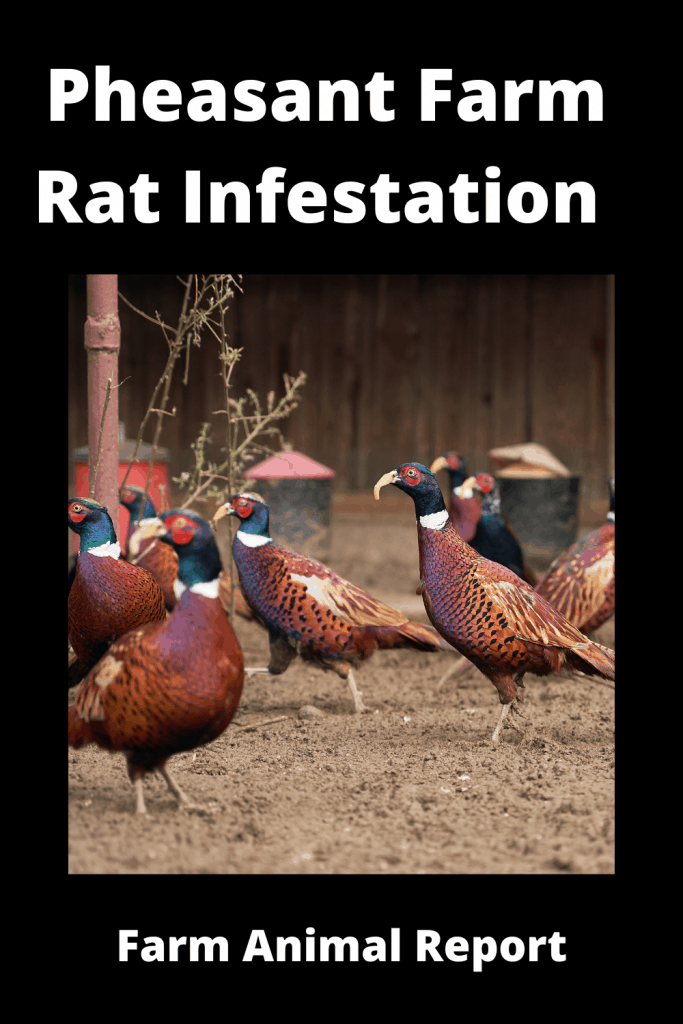
Trapping
Traps are set in rodent routes. The pheasant farm with a massive rat infestation is checked and reset several times each night.
There are many types of traps available on the market, and the selection is based on spring resistance and trigger sensitivity.
- Box – live capture
- Conibear rat Traps
- Glue Boards
- Smoke Bombs
- Homemade Bait Balls –
- Commercial Bait Blocks
The only problem with the trapping method is that continued use of the catch leads to the shyness of the trap (avoiding traps). Different fruits, vegetables, peanuts, and butter are used as bait in the traps.
Traps are placed behind objects, near the wall, and in dark corners where rats will hide. Depending on the size of the pheasant farm, the number of traps can be increased. Check traps daily and remove dead rats and reset traps.
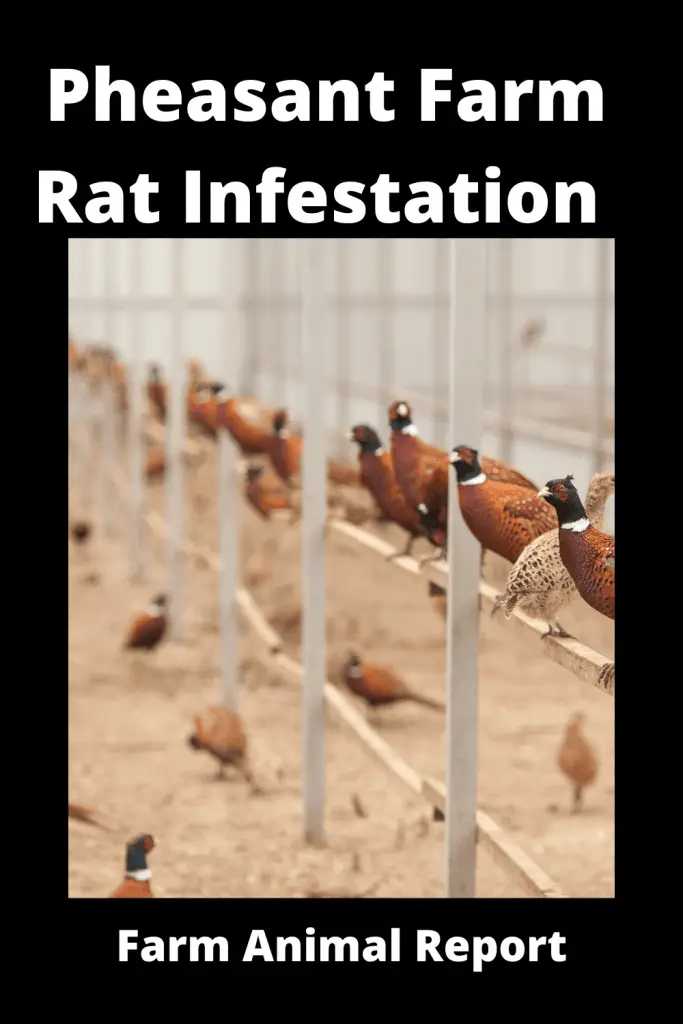
Mink Killing Rats
Trained Mink are amazing Rat Killers. With their small slender size and their Killin ability, they can quickly find and kill a full-grown rat. minks kill their prey by biting them in the neck.
If you use minks to Hunt and kill your Rat problem. Take and protect your Pheasants, pen them up or put them into cages.
Using Dogs to Hunt Rats
For Hundreds of Years, generations of people have used Dogs to Hunt Rats and Mice. There are several Breeds of Dogs that are Ratters. These dogs have a natural instinct to hunt and were used for Rodent Control
- Jack Russel Terriers
- Rat Terriers
- Yorkshire Terriers
- White Terriers
- Miniature Schnauzer
- Dachshund
Will Cats Hunt Rats
Cats will do a great job for Rat Control. But you have to protect you Birds from the Cats
Natural Methods to Control Rats
here is a list of natural ways to control a Rat problem.
- Moth Balls
- Ammonia
- Used Cat Litter
- Owl Feathers
- Essential Oils, citronella, peppermint and eucalyptus oils
- Cut Onions
- Black Pepper
- Human Hair – Local Barber Shop
- Cow Poop
- Ultrasonic – repellers
- Baby powder
- Baking Soda Balls – ( 1/3 Cup Peanut Butter, 1/2 Cup Baking soda, create Bait Balls) – baking soda is safe for larger animals but is toxic to Rats and Mice because of their smaller size.
- Plaster of Paris Bait Balls – ( not very oily 1/2 Cup Peanut butter, 1/2 Cup of Plaster of Paris, make bait Balls) The plaster of Paris dehydrates the rat and he dies of dehydration
- Steel Wool in Rat Hole entrances
Rats natural Predators
- Hawks
- Owls – Especially at Night
- Hawks
- Falcons
- Cats
- Snakes
- Weasels
- Dogs
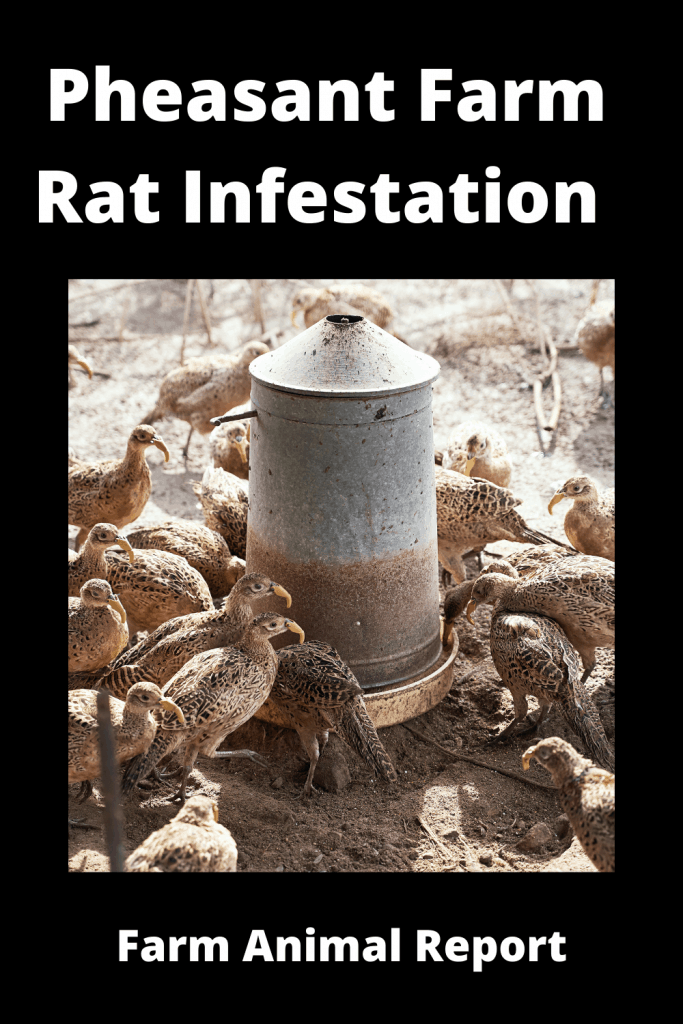
Preventing Rat Infestations
Controlling Rats is very challenging. They are resilient little creatures. They Breed Very Rapidly, and with their teeth can do a lot of damage by chewing and knawing – Here are some suggestions to prevent Rat Problems before they become overwhelming
- Store Foods in Sealed Ratproof – metal containers
- If you can protect your Pheasants – Keep a good supply of Cats. Rats are out at night, cats hunt at night. Rats can smell cats and will avoid them
- Keep Hiding areas to a minimum
- Garbage attracts Rats
- Rat Terrier (Dog) as a Pet – They are called Ratters
- Floors are swept and feed is kept cleaned up
- Keep all weeds and grasses trimmed and short
- Fill Holes and cracks
- Remove their Habitat
- Rats will not Stay if they cannot find Food ( or get access to it)
Commercial Pheasant Farms
Conclusion
Rats can cause many losses not only in the form of money but also in the form of loss of building structure. They can chew almost everything they see. You must control rats one way or another, these are some methods to help you avoid loss.


